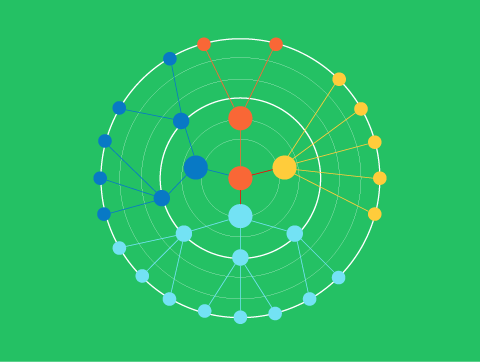” Why Algorithms Matter “
What is a Search Algorithm?
A search algorithm is a complex set of rules and formulas used by search engines to retrieve and rank content on the internet. These algorithms assess hundreds of ranking signals to deliver the most relevant and authoritative content in response to a user’s query. Modern algorithms utilize machine learning, semantic search, and contextual relevance to refine results in real-time.
Search engines like Google, Bing, and DuckDuckGo employ proprietary algorithms that are constantly evolving. While the core principles remain rooted in relevance, authority, and usability, updates frequently change how results are prioritized, impacting SEO strategies across all industries.
Core Functions of a Search Algorithm
1. Crawling and Indexing
Search engines deploy bots (crawlers) to discover new and updated content. These bots parse HTML, JavaScript, and structured data to understand a page’s subject and importance.
Key elements crawlers consider:
- XML sitemaps
- Robots.txt files
- Internal linking structure
- Page load speed
- Mobile usability
Once crawled, content is indexed—catalogued in the search engine’s massive database to be retrieved later through ranking processes.
2. Query Interpretation and Intent Detection
Search algorithms are no longer keyword-only focused. They now interpret search intent—the reason behind a user’s query.
- Informational – looking for answers
- Navigational – seeking a specific site
- Transactional – ready to make a purchase or action
Algorithms use Natural Language Processing (NLP) to match user queries with relevant results, even when keyword phrasing varies.
3. Ranking and Relevancy
Ranking algorithms sort through indexed content and apply multiple ranking signals, such as:
- Content relevance and freshness
- Domain authority
- Page experience (UX)
- Content depth and semantic richness
- Backlink quality and diversity
- User engagement metrics (CTR, bounce rate, dwell time)
The goal is to surface the most valuable, trustworthy, and contextually appropriate content for each search query.
Why You Should Pay Attention to Search Algorithms
Search algorithms directly influence digital visibility, affecting brand discovery, web traffic, and ultimately revenue. A deep understanding allows businesses to align their digital strategy with algorithmic expectations.
Key reasons to stay informed:
- Algorithm updates can impact rankings overnight.
- Well-optimized content leads to higher traffic and conversions.
- Understanding user intent fuels better keyword strategy.
- Algorithm-aware design enhances technical SEO.
Major Google Algorithm Updates You Should Know
Google’s Key Algorithm Milestones
| Update | Purpose |
|---|---|
| Panda | Content quality, thin or duplicate content |
| Penguin | Link spam, manipulative backlinks |
| Hummingbird | Natural language queries and intent matching |
| RankBrain | Machine learning for improved query interpretation |
| BERT | Better understanding of nuanced search language |
| Helpful Content | Prioritizing people-first, value-driven content |
Each update redefines the best practices of SEO. Failure to adapt can lead to ranking drops and loss of visibility.
On-Page SEO Elements Aligned With Algorithms
Content Optimization
- Keyword targeting should follow user intent, not keyword stuffing.
- Headings (H1-H3) must be structured, scannable, and rich with semantic keywords.
- Content depth matters—comprehensive pages with supporting facts and data perform better.
- Media elements (images, infographics, video) increase time-on-page and improve engagement.
- Internal linking strengthens contextual relationships between pages.
Technical SEO Considerations
- Mobile-first design ensures accessibility and improved rankings on mobile SERPs.
- Page speed optimization via compression, caching, and minimized JavaScript.
- Structured data (schema markup) helps search engines understand context.
- Canonical tags avoid duplicate content issues.
- Secure protocols (HTTPS) improve trust and SEO signals.
UX and Engagement Signals
- Clear CTAs guide users and lower bounce rates.
- Responsive layouts enhance cross-device compatibility.
- Readable fonts and whitespace increase content consumption.
- Engagement hooks (quizzes, polls, downloads) prolong dwell time.
The Role of AI and Machine Learning in Search
Search algorithms are now intelligent systems trained to:
- Understand context beyond keywords
- Recognize synonyms and latent topics
- Evaluate user behavior patterns
- Adjust search rankings dynamically
Machine learning models like Google’s RankBrain and BERT assess not only what users type but what they mean, adapting results based on historical data and user satisfaction.
Diagram: Search Algorithm Workflow
mermaidCopyEditflowchart TD
A[User Enters Query] --> B[Search Engine Receives Input]
B --> C[Query Analysis & Intent Matching]
C --> D[Algorithm Searches Indexed Content]
D --> E[Content Evaluation: Relevance, Authority, UX]
E --> F[Ranked Results Displayed to User]
F --> G[User Interaction Data Collected]
G --> H[Machine Learning Refines Future Rankings]
Voice Search and Algorithm Adaptation
With the rise of voice assistants, search algorithms now emphasize conversational queries and featured snippets. This trend favors content optimized for:
- Long-tail, question-based keywords
- FAQ schemas
- Natural language patterns
- Local SEO strategies
Future-Proofing Your SEO Strategy
Embrace Algorithmic Transparency
While search engines don’t reveal all ranking factors, patterns emerge:
- High E-E-A-T (Experience, Expertise, Authoritativeness, Trustworthiness) content consistently ranks.
- User-first experiences are rewarded with better visibility.
- Algorithmic compliance isn’t about gaming the system—it’s about aligning with its logic.
Stay Agile With SEO Monitoring Tools
Invest in tools that track performance and algorithm shifts:
- Google Search Console
- Ahrefs
- SEMrush
- Moz
- Screaming Frog
Use these to analyze rankings, backlink profiles, page errors, and competitor positioning.
Conclusion: Search Algorithms Are the Gatekeepers of the Web

In today’s digital landscape, search algorithms serve as more than just technical systems—they are the gatekeepers of visibility and trust. Businesses that effectively align with these algorithms consistently outpace competitors, achieve superior rankings, and drive lasting growth.
Consistent monitoring, content excellence, and user-first design are the cornerstones of algorithm-friendly digital strategy.

